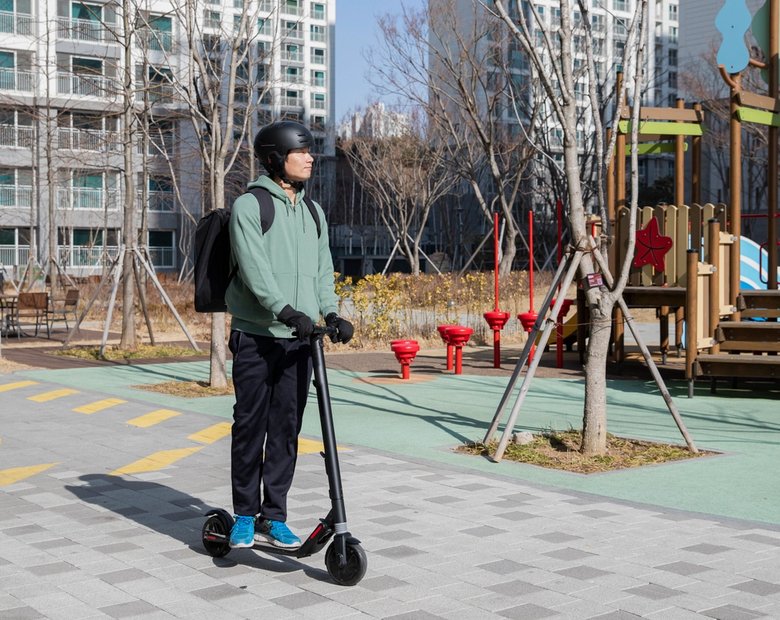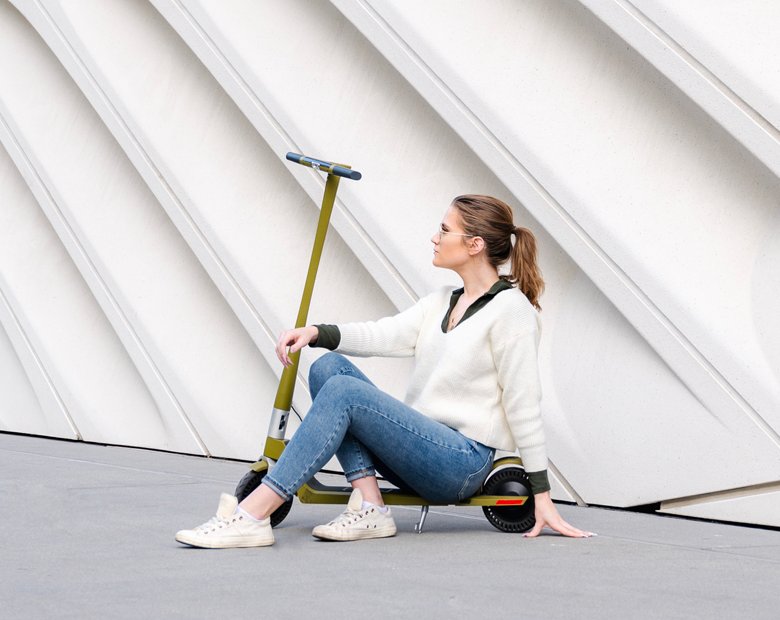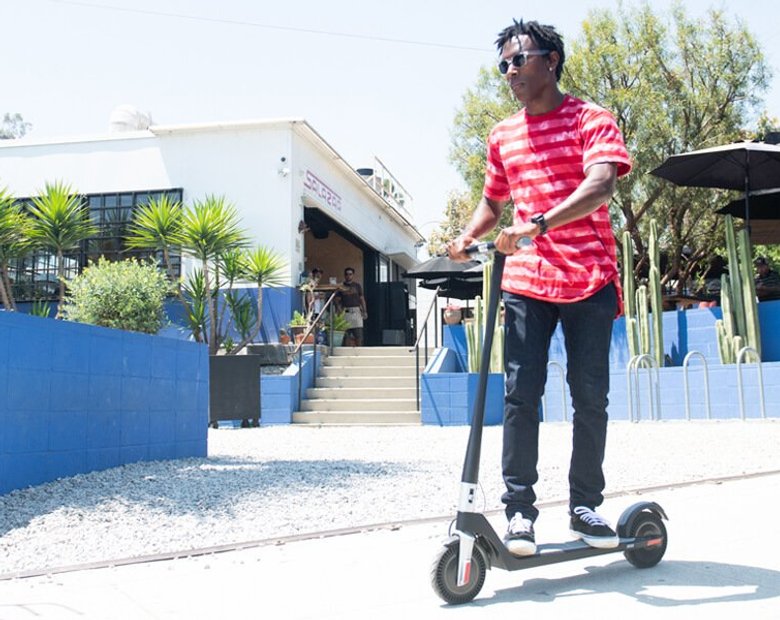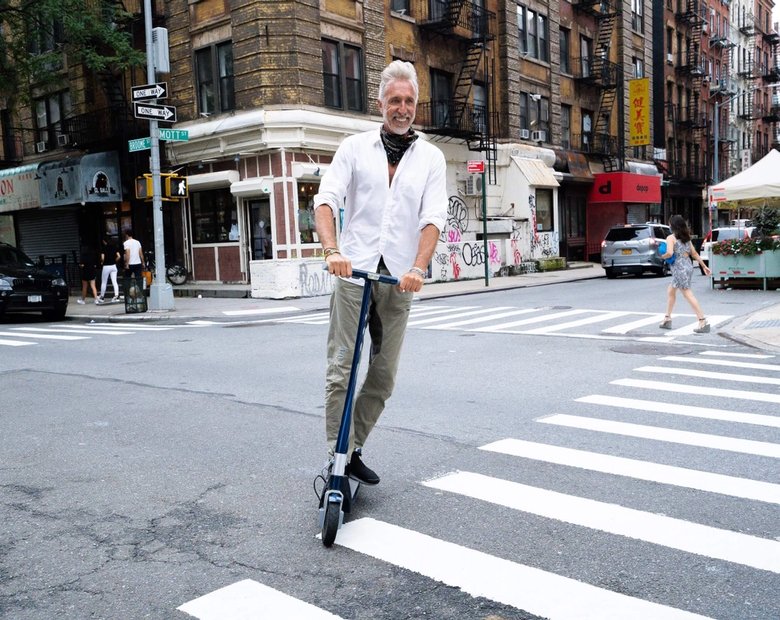Micromobility has arrived. Personal electric vehicles are solving last mile problems and replacing car trips as major cities move away from car-centric infrastructure. Increasingly, commuters are realizing how much faster and easier it is to get to work on an electric scooter or e-bike than it is to sit through dreaded rush hour traffic or live at the mercy of unreliable public transportation systems.
When it comes to which personal electric vehicle is best, the choice between an e-bike or e-scooter might already be made for you by some critical factors, including portability and storage capacity. Can you fit a full-sized electric bike in your tiny studio apartment? Carry one up the stairs in your building with no elevator? If not, you’re probably leaning toward a scooter or a maybe a small, folding electric bike.
But there are many other considerations, especially if you’re just figuring out how to transition from more traditional modes of getting around.

Some other points of comparison include the need to access other modes of transportation easily or to carry larger loads; the distances you typically have to travel; or a desire to get some optional exercise along the way. Both energy-efficient options are excellent choices in their own right, but these are very different kinds of vehicles, as we’ll see.
Comfort and Convenience
If you asked 3-4 people to name the ideal personal electric vehicle you might get 3-4 different answers. Bodies and needs vary. Some people might find riding an electric bike challenging or impossible. For others, standing and balancing on a scooter or skateboard can be too difficult. For a number of riders, an electric bike may simply be the most comfortable option.
Most electric bikes have large frames and tires to accommodate the added weight of the battery and motor. Electric mountain and hybrid bikes also include full or partial suspension systems, which are as useful on bumpy, potholed city streets as they are on the trail. If comfort is your main concern, you might consider the huge range of electric bikes, which do come in lighter, folding options to better meet a need for portability.

That’s not, however, to say that electric scooters don’t offer a comfortable ride—they do. Many high-performance models even feature large pneumatic tires and suspension systems, though at the cost of a larger vehicle that may not be easy to fold or carry and can weigh as much as an e-bike. For most people, these heavy add-ons defeat one of the primary reasons for owning a scooter—convenience.
Most lightweight, durable scooters like Unagi’s Model One—which comes in at under 30 pounds in both its single and dual motor versions—ride smoothly and comfortably over level pavement and can easily be folded and stowed in a closet or carried onto public transportation. Electric bikes, on the other hand, can weigh anywhere from 50 to 100 pounds.

But convenience is a relative term. If you plan on using an electric vehicle to do your regular shopping or move kids from place to place, there’s no better choice among the range of options than a heavy-duty electric bike with a large rack, extra seating, and cargo capacity. If you want to pound the pedals and get a workout on your commute, a lighter-weight electric bike might suit you best. If your ideal mode of transport is weaving through the traffic, traveling light, and having the option to easily grab a taxi or hop on a bus or train, a lightweight folding electric scooter should be the clear choice.
Speed and Range
It’s true that the majority of electric bikes will outperform most lightweight e-scooters in top speeds, though there are, of course, exceptions. In order to keep weight down, scooter manufacturers equip their vehicles with smaller batteries and motors. Most electric scooters tend to top out at speeds of 22 mph, where electric bikes may reach speeds of up to 30 mph or more. But if you’re riding in heavy traffic or on crowded city streets, speed may not be a foremost concern.

E-scooters are sleek and nimble and can easily maneuver around cars and other vehicles that slow cyclists down. In a comparison between several different personal electric vehicles, one Electrek reviewer writes, “I rarely felt like needed to go faster than the scooter’s top speed because I had to slow down to pass cars anyways. With such a thin vehicle, it was easy to slide between and around cars that were stuck in traffic when on streets that didn’t have a bike lane.”
It’s also true that electric bikes will generally have much longer ranges and will therefore work best for longer commutes and adventures, though their larger batteries can take more time to charge. Many people who choose to purchase an electric bike live in low-density areas with lots of roads and trails and longer distances to cover. Scooter buyers, on the other hand, might tend to live in large cities where lower speeds and ranges are worthy tradeoffs for convenience, portability, and maneuverability.
Cost and Safety
Cost is certainly not the least consideration when deciding between an electric bike and electric scooter. If you need to haul things, spending the extra money on an electric bike may be the preferable (or only) option. That said, not all e-bikes cost more than high-end electric scooters (just as not all e-bikes are as harder to carry and store). The amount of money you’re willing and able to invest in a personal electric vehicle will greatly depend on your specific budget and transportation needs.

Price differences tend to be negligible between higher-cost electric scooters and lower-end electric bikes. On the other hand, some high-performance, specialty, and cargo electric bikes can set you back several thousand dollars. You can purchase an electric scooter of similar quality and durability, like the Unagi Model One, for under a thousand dollars. It’s also worth considering that the scooter will be far more theft resistant.
Electric bikes are at a much higher risk of theft because of high resale prices and because they must be left outside on most trips. This makes cost of ownership go up due to expensive bike locks and e-bike insurance. Electric bikes also require far more maintenance than well-made e-scooters, which may need no more than a battery replacement every few years.
When it comes to riding safely, an electric bike can be a better option on the road than an electric scooter. There are several reasons for this, some having to do with the design of the vehicles themselves: scooters are lower to the ground and their wheels are much smaller, so they don’t handle bumps and jolts nearly as well. Scooter riders are also less visible to drivers than cyclists are.
However, some significant reasons for the disparity come down to rider behavior, as the Electric Scooter Guide points out. We are conditioned from early childhood to take bike safety seriously, but “for 20 years we have ridden kick scooters” like the Razor “as a toy, and all-of-a-sudden we see one on the street, not realizing these new devices are more akin to a motorcycle than the toy we used to know.” Maybe for this reason, e-scooter riders are much less likely than cyclists to wear helmets, and thus more likely to be seriously injured.
Conclusion
As we’ve noted, the choice between an electric bike and an electric scooter (if you have to choose!) can depend on a number of variables that differ widely between individual riders. No personal electric vehicle is designed to meet every possible transportation need. When it comes, however, to cost, convenience, and ease of use, electric scooters might just be the best option for the majority of urban commuters and riders-about-town.














